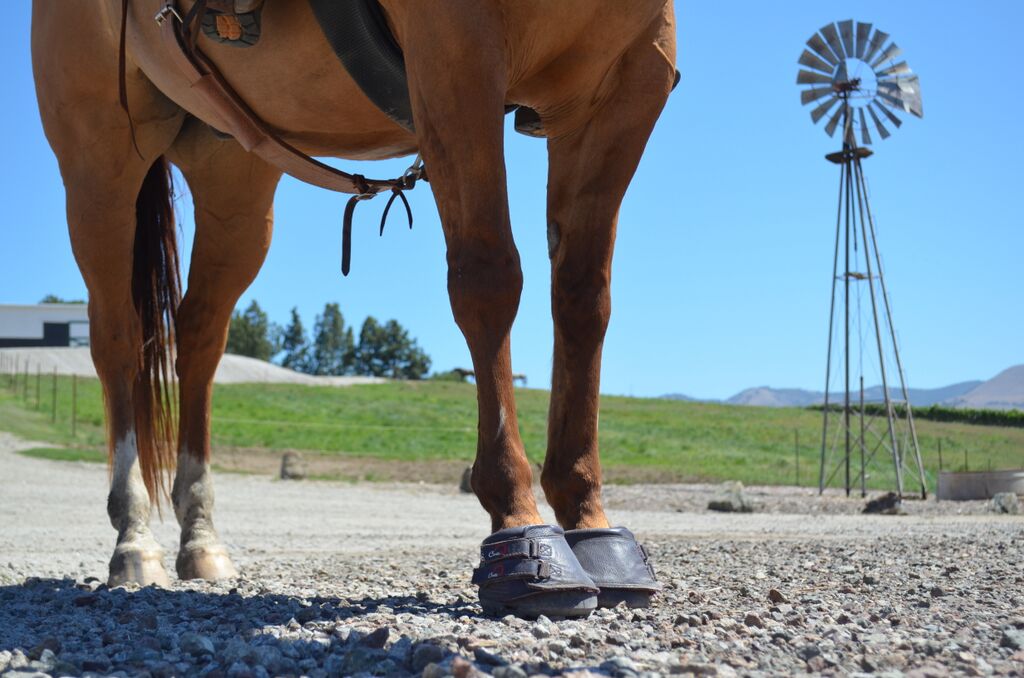Warnings From Your Horse

I started Cavallo in 1993 with one burning question on my mind, “how can I make this a better industry for our horses and the people who ride them?”
It’s a big question that developed as a result of many unanswered questions that preceded it. The sorts of questions that can really challenge horse owners because the answers are unclear. Things like tripping going downhill, when the day before your horse was fine. Things like a subtle look of distress, peaked eyelids, can’t pick up the correct lead, swishing tails, unwillingness, lethargy…and the list goes on. You recognize that things aren’t quite right, but can’t really put your finger on the cause. You just notice a subtle symptom.
 I don’t come from a horsey background and I started riding as an adult. I guess you could say, I came into the horse world with a clean slate. The thing is, I really didn’t like some of the answers to the many questions I was asking about my new horse Rocky. He was lame half the time and seemed agitated the rest of the time. I was told that it’s just part of horse ownership and that I should forget about it and get on and ride. He was old, they told me – all of 12 years! I thought, NO WAY. Horses have been on the planet for over 50 million years. If they had a design flaw, they would never have made it this far. I had to get to the bottom of this.
I don’t come from a horsey background and I started riding as an adult. I guess you could say, I came into the horse world with a clean slate. The thing is, I really didn’t like some of the answers to the many questions I was asking about my new horse Rocky. He was lame half the time and seemed agitated the rest of the time. I was told that it’s just part of horse ownership and that I should forget about it and get on and ride. He was old, they told me – all of 12 years! I thought, NO WAY. Horses have been on the planet for over 50 million years. If they had a design flaw, they would never have made it this far. I had to get to the bottom of this.
What I discovered is that these subtle signs should not be overlooked. They are warning signs from your horse. Ignore them at your peril – and if you do, bigger problems will surely arise. There is a typical cycle with shod horses that begins anywhere from 4-6 years of age. A problem arises, be it subtle, like the ones listed above or more pronounced, like head-bobbing, lameness or serious behavioral issues. It is a result of their discomfort with the traditional practice of hoof treatment. We give them stall rest, or change the farrier or feed program. We give them an anti-inflammatory or a pain killer. The situation abates for a time, but if we do not address the cause, it returns with more strength. By 10-12 years old, many horses have a bout with laminitis, navicular disease or another diagnosis and a more serious treatment is prescribed. Maybe the farrier applies bar shoes, clips and pads to keep the shoes on. Maybe, as in Rocky’s case, they are given a daily dose of Bute.
Either way, the real answer for the diagnosis is to discover the cause and change the prognosis.
 Here’s what one of the our top Veterinarians has to say: Dr. Robert Cook, FRCVS, PhD, Professor of Surgery Emeritus at Tufts University- “All horses hooves are healthier without shoes, and barefoot horses are healthier than shod horses. They live longer, happier, less painful lives. Barefoot is a requirement for health and should be accepted as a condition for keeping a horse. Humane management is not just preferable, it is non-negotiable. The foot evolved to function unshod. Nature has developed the perfect design for grip and slide in all conditions and provided for unsurpassed shock absorption. The foot cannot expand and contract with each step when clamped. Blood supply to the foot is impoverished and horn production becomes deficient. When the foot is prevented from functioning correctly, the pastern, fetlock, cannon, and knee are also placed at risk. This leads to bone, joint, & soft tissue injuries”.
Here’s what one of the our top Veterinarians has to say: Dr. Robert Cook, FRCVS, PhD, Professor of Surgery Emeritus at Tufts University- “All horses hooves are healthier without shoes, and barefoot horses are healthier than shod horses. They live longer, happier, less painful lives. Barefoot is a requirement for health and should be accepted as a condition for keeping a horse. Humane management is not just preferable, it is non-negotiable. The foot evolved to function unshod. Nature has developed the perfect design for grip and slide in all conditions and provided for unsurpassed shock absorption. The foot cannot expand and contract with each step when clamped. Blood supply to the foot is impoverished and horn production becomes deficient. When the foot is prevented from functioning correctly, the pastern, fetlock, cannon, and knee are also placed at risk. This leads to bone, joint, & soft tissue injuries”.
The choice is yours to make.
Happy Trails,


